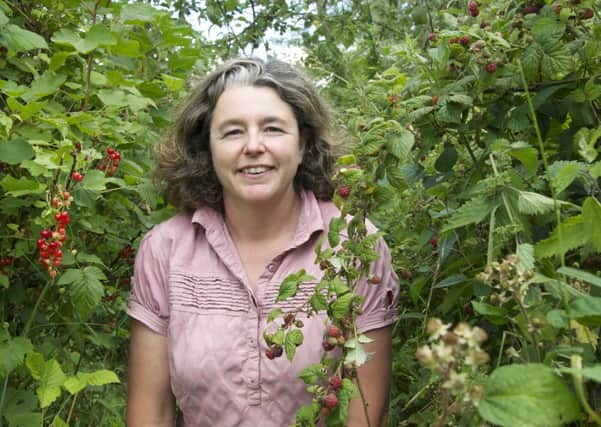Forest garden provides a fruitful bounty


This gem is the forest garden at Old Sleningford Farm. Set over two acres, it forms part of a 17-acre smallholding run by Rachel Benson and her partner Martin Baker, on marginal land rented from Tom Ramsden’s Old Sleningford estate at North Stainley.
The forest garden mimics immature woodland in which all plants are edible or useful. Food crops occupy every available space, including under the ground, on the ground and as bushes, trees and climbers.
Advertisement
Hide AdAdvertisement
Hide AdRachel and Martin started planting theirs 10 years ago and it now includes over 250 fruit and nut trees, which shelter a multi-storey garden beneath their canopy.
Planting a forest garden begins with a ‘canopy layer’ of mature fruit trees, interplanted with a lower layer of smaller nut and fruit trees. At Old Sleningford this includes varieties of apples and pears, cherries, plums, cobnuts and hazels.
There are peaches and apricots too, although the previous two damp winters have prevented them from fruiting for the past three years.
Increasingly, the garden includes self-seeded native trees like hawthorn and ash. These are removed as seedlings, or allowed to grow in a controlled way to provide wood for burning and green woodworking.
Advertisement
Hide AdAdvertisement
Hide AdBelow the canopy layer are the fruit bushes, including black, red and white currants, gooseberries, raspberries and unusual additions such as the Japanese wineberry.
Next is a ‘herbaceous layer’ of perennial vegetables and herbs - marjoram, oregano, chamomile, thyme, tarragon, fennel, lemon balm and mint.
Below, ground cover comes from self-seeding plants like spinach and chard, strawberries, and salad leaves.
The underground layer, grown for its roots and tubers, includes Jerusalem artichokes and onions. Vines and climbers like grapes, hops and kiwi fruit occupy a seventh layer.
Advertisement
Hide AdAdvertisement
Hide Ad“We decided to plant a forest garden because the idea of lots of food with minimal work appealed,” Rachel said. “We knew that setting it up would take time, effort and money, but once it was established we were hopeful it would require little intervention.
“The forest garden isn’t just for us for food. It’s also for the wildlife. We don’t need all that it produces.”
Because all the plants are perennials or self seed easily, the ground is permanently covered, which in theory means minimal weeding. In practice, there is always weeding to do.
“The biggest investment is time,” Rachel says. “Being a gardener I knew we’d have to do something or it would just revert to nature.”
Advertisement
Hide AdAdvertisement
Hide AdLast year Rachel stopped counting after weighing 110kg of blackcurrants. In previous summers the garden has produced a quarter tonne of strawberries.
“By the end of the second year the first section was covered with plants and producing good harvest of berries, herbs and salads. During year four, section one provided a hefty harvest, including the first apples and pears.”
By 2010 yields were sufficient for Rachel to start a new venture, Old Sleningford Preserves. “I started the preserves business because we physically couldn’t eat everything and I hate to see food go to waste. I have about 20 customers who pay £7 per month for something sweet, something savoury and a drink. Martin and I deliver on a tandem and trailer.”
For Rachel, forest gardening is a lifestyle choice. “I do this as a hobby. Selling preserves and holding courses help the garden pay for itself.
Advertisement
Hide AdAdvertisement
Hide Ad“There’s potential to make it more profitable by expanding these, or having a pick your own or box scheme. That would then become a ‘job’, something I’m not interested in.
“It’s the food it gives us, the wildlife and ambience that’s important.”